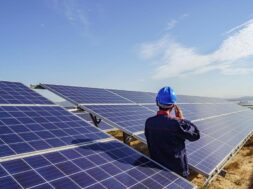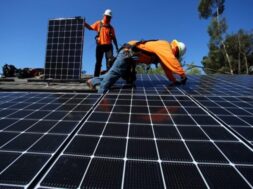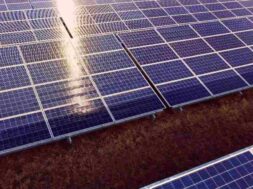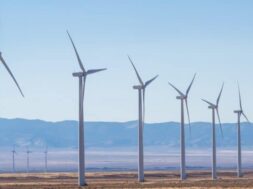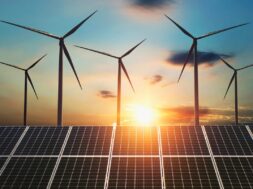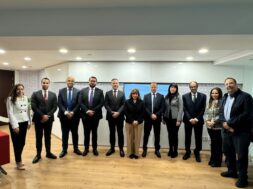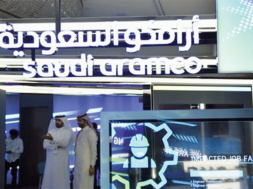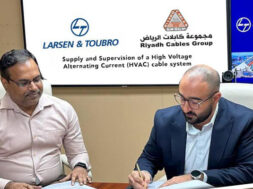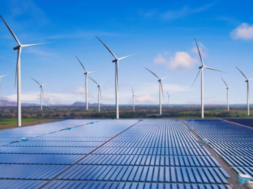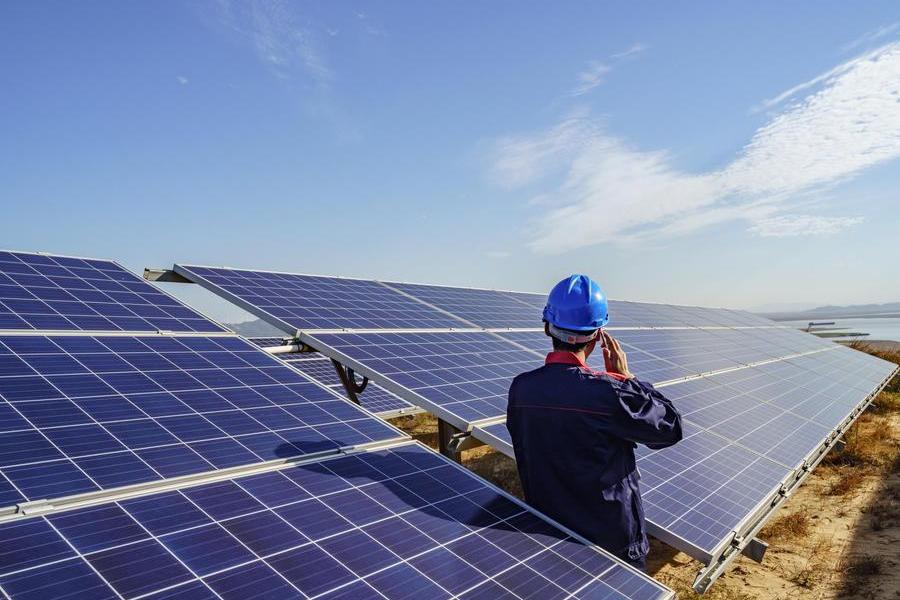
In Short : Expanding solar solutions refers to the broadening and enhancing of initiatives related to solar energy. This can involve increasing the deployment of solar panels, implementing new technologies to improve solar efficiency, developing solar storage solutions, and extending the reach of solar energy in various applications, from residential to industrial settings. It reflects a commitment to leveraging solar power as a sustainable and renewable energy source for a variety of needs.
In Detail : The further development of solar power could help provide more reliable and inexpensive electricity while reducing the need for state subsidies, reports Sarah Elhosary
In response to last year’s frequent power outages and the recent increase in electricity prices at the beginning of this year, efforts have been intensified to explore the use of solar energy as a potential solution.
According to Ayman Heiba, head of the Cairo Chamber of Commerce’s Sustainable Energy Division, in partnership with a group of consultants the division is developing a plan to promote a “green transition” that will reduce the burden of electricity costs for consumers while also decreasing the need for state subsidies.
The project will actively encourage the adoption of solar energy for electricity generation, thereby reducing dependence on fossil fuels and saving the state’s monthly import bill of $350 million for fossil fuels.
“A detailed vision for the financing of the new fund that will pay for this transition will be revealed within the next month, enabling it to provide financial support to people owning their own solar power facilities,” Heiba said.
“We have also invited the banks to offer financial facilities to people wanting to install small solar power stations. The project promotes the installation of such facilities on roofs, thereby increasing electricity production and reducing the reliance on fossil fuel-based electricity.
“We urge the government to allow people to implement industrial and commercial projects for solar energy generation as well, and the project also proposes launching a package of incentives, including tax exemptions for factories and investors relying on renewable energy, to encourage them to invest further.
“Exempting renewable energy components from value-added tax could also significantly reduce the cost of owning solar power stations, which will help to moderate increases in prices caused by exchange-rate changes and encourage more people to buy them.
“These steps offer solutions to the challenges in encouraging people to buy solar equipment, despite the worldwide decline in the price of components. Increases in the dollar exchange rate make the equipment more costly, in some cases tripling the cost of installations,” Heiba said.
“All the inputs for solar-panel manufacturing are imported, except for the aluminium frames, which Egyptian factories make,” said Ali Nadi, sales manager at a solar-panel factory. “We import ready-made parts for solar panels and assemble them for companies that install solar power stations. We also install them ourselves in companies, farms, hospitals, and even private residences.
“However, sales have declined this year compared to last year and the year before, owing primarily to the dollar’s increased value. We have also lowered the quantity we used to buy, as the same amount now only buys one-quarter of the components we used to acquire. We’ve increased the intervals between imports, now importing every three months rather than every month due to difficulties in obtaining the necessary dollars from the banks,” Nadi said.
“However, despite these drawbacks, the availability of bank funding has aided the growth of solar power stations, particularly on reclaimed agricultural land in Wadi Al-Natroun, Farafra, and East Owainat. Farmers in these areas use solar power for irrigation pumps and draw water from wells for agricultural purposes.
“For farmers, the solar power stations are an appropriate choice as the alternatives include petrol generators, which are more expensive.”
SOLAR AGRICULTURE: Solar panels cover around 1,200 square metres of agricultural land at a farm in Wadi Al-Natroun owned by farmer Medhat Al-Banna, who says that the panels provide the electricity needed to power a pump to irrigate 20 acres.
“I chose a solar power station over regular electricity because the monthly payment was approximately equal to the price of installing it. Despite paying cash for the station, the savings on electricity bills will allow me to recoup its cost in about eight years, and I will then enjoy approximately 12 years of electricity without incurring any additional expenses, since the equipment’s expected lifespan is more than 20 years.”
The solar station is directly connected to the irrigation pump and is located in an open area that is free of trees that could cast shadows on the solar panels, reducing their performance. Al-Banna uses conventional electricity for no more than three months per year during cloudy days or when the sun is not bright.
He sees a solar power station as a good investment, noting that “the government will gradually eliminate electricity subsidies, and what I acquired for LE250,000 two years ago is now worth around LE600,000. All the neighbouring farms have also installed solar panels to generate electricity, and some have secured loans from the agricultural bank at the reduced rates designed exclusively for farmers.”
In the long term, such owners of solar power stations can recover their investments and benefit from years of free electricity. However, can they also help people in urban areas suffering from power outages at home?
One villa owner equipped with a solar power station in Sheikh Zayed city said that “if the Egyptian Electricity Holding Company [EEHC] cuts off the power, I cannot get energy directly from a solar power station either, meaning that installing one does not solve the problem. When I had a solar power station installed at home, it was connected to the electricity company’s lines, allowing both to function on the same grid.”
However, under ordinary circumstances solar power can make quite a difference. Panels on the house’s roof are placed to face the sun throughout the day, and they provide more than twice the energy required by the homeowner.
“During daylight hours, the panels provide power to the EEHC, and the house receives electricity from the EEHC as well. I use a bidirectional meter to track the electricity flow between the station and my home. At year-end, the EEHC calculates the difference and compensates me for any surplus electricity generated by my solar station,” he said.
Despite the effectiveness of solar power stations, they may not be suitable for all homes, Nadi said. “There is a minimum electricity consumption required for the station to be cost-effective for its owner. The household’s monthly electricity bill should exceed LE1,000, for example, and those who consume less receive electricity at a subsidised rate from the power company anyway,” he said.
“If a homeowner pays around LE2,000 a month for electricity, they can install a 10-kilowatt solar station costing approximately LE200,000. This amount would be covered over eight years at the same cost as the current electricity bill. However, they will then benefit from about 17 years of free electricity, as the solar panels provide power for approximately 25 years.”
The investment should be calculated according to the needs of the homeowner and the area. “If someone uses around 1,200 kilowatt-month of energy, this number is divided by 30 days of the month, resulting in 40 kilowatt-hours per day. We then divide these kilowatt-hours [kWh] by the average number of daylight hours, which is five hours on average, making eight kWh. The per-kilowatt-hour cost is LE20,000, which includes installation. As a result, a station with this capacity should cost around LE160,000,” Nadi said.
In addition to meeting his minimum electricity requirements, the homeowner should also have enough roof space to install the solar panels. A sunny spot should be chosen not shaded by trees or neighbouring buildings, as shade can affect the panels’ operational efficiency. Dust and clouds also reduce the effectiveness of the panels by obscuring the sunlight, causing them to operate at less than maximum capacity. The panels also need to be washed and maintained.
“Solar panels have evolved significantly in recent years, with their light absorption efficiency increasing from 13 to 23 per cent,” Nadi said. “They can now provide electrical energy even during periods of less intense or less direct sunlight, although at a lower rate compared to under strong sunlight. Additionally, they can withstand rain, wind, and ice.”
IMPROVEMENTS: Such improvements have also been made to lighting units and other products designed to operate with solar cells, said Emad Magdi, the manager of a solar-energy company.
“I have been involved in selling solar-energy products since 2017, and they have become more diverse and advanced. I import garden lighting units and flashlights powered by solar energy from China and resell them at prices ranging from LE100 to LE3,000. The price varies based on quality and battery and cell capacity, which determines the operational period ranging from one hour to 12 hours,” Magdi said.
“The product’s lifespan is determined by its quality, with high-quality ones lasting four or five years, while lower-quality products may only last for about a year. Over time, the efficiency of the products decreases, so instead of working for 15 hours, as they did initially, they may work for 10 or only eight hours as they begin to wear out.
“Unlike large solar panels, solar-energy products do not require the placing of the photovoltaic cell on a large surface. You can also place it on a small balcony exposed to sunlight. These products have batteries that store electrical energy, meaning that they still operate after the sun sets. This makes them a practical solution to the problem of frequent power outages. They can also be an ideal solution in areas that lack a basic electricity supply.”
However, despite these advantages there is still a problem of supply in some areas. “Despite the significant advances in solar-power products in recent years, and their widespread adoption in public facilities and new residential communities, factories for assembling panels and installing stations still meet less than 10 per cent of Egypt’s total solar-energy needs,” Heiba said.
“Even though the country has taken substantial steps to generate energy from renewable sources and has set an ambitious goal to generate 42 per cent of its electricity from renewable sources by 2035, up from 20 per cent in 2020, many nations, such as Tunisia, have been leading the way in developing projects that encourage more citizen participation in renewable and solar energy,” he noted.
“Tunisia has allowed people to buy solar power plants with subsidies of 25 per cent, with the remaining cost payable through instalment plans on their electricity bills and aided by bank loans, for example. This means that every citizen can have a solar power station and a solar water heater.
“We have to adopt such incentives in Egypt too, as switching from electric heaters, known for their high electricity consumption, to solar heaters could result in a 30 per cent reduction in electricity bills alone,” Heiba said.
“Consumers will enjoy cost savings, while the financial burden of supporting the power grid will be largely lifted from the state. Despite the recent rise in tariffs, the production cost of electricity from fossil fuels is still significantly higher than the current prices charged to consumers.”
